Off-Axis Carabiner Loading
In general, when folks are talking about the ultimate strength of a carabiner, they’re referring to its major axis strength (it’s strongest orientation), with the majority of the load being taken by the spine. CE testing also requires open gate strength (with the load still in line with the spine) and minor axis testing (with the load across the gate). These are the three values you typically see on CE certified carabiners.
But what happens in a closed-gate loading scenario when the load is not aligned with the spine? How much weaker is a carabiner in this orientation? This was the question that my buddy Kelly “Sketchy” Cordes asked me.
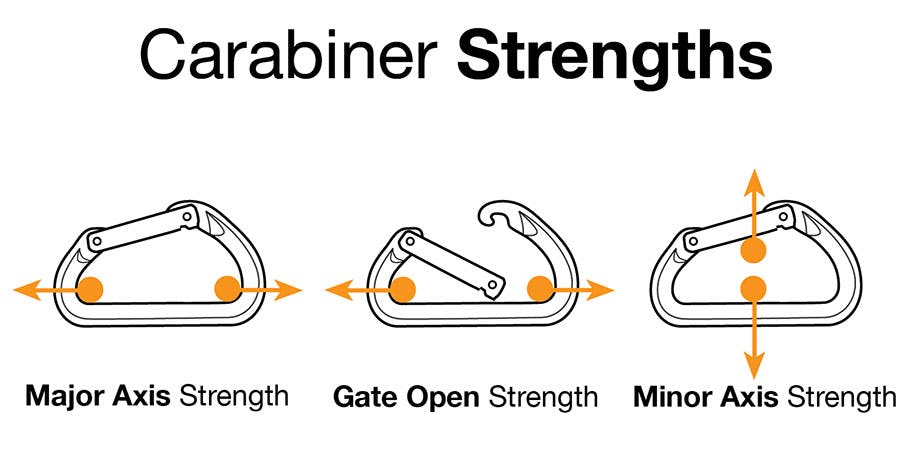
Kelly’s question was as follows, with reference to the image below.
Hey KP,
Here’s the simple version of my question(s): assuming the gate remains closed/locked, is Point B significantly weaker than Point A? If so, how much? Could you whip on Point B? If you were climbing with Andre the Giant (God rest his soul), could he safely chill at a hanging belay with all of his weight on Point B?
What about the points in between? If B is weaker than A, is it a linear decline along the way? What's the influence of the shape of the biner on this potential shift in strength?
The reason for this question arose because when I am at a belay, I sometimes use a biner (often a VaporLock—great biner!) as a "master biner." Into that master, I'll clip myself (clove from my tie-in with a smaller locker), and maybe also my auto-blocking belay device to bring up the second. When the second arrives, they might also clip into that master. If you're climbing as a team of three, you could easily then have four biners stacked up in that master locker at a belay, from Point A all the way (or close to) Point B.
Is there much risk in compromising the strength of the master? Obviously consequences would be catastrophic if suddenly it exploded like a hand grenade and sent us all plunging toward the eternal lake of fire.
PS—A follow-up question to that Point A to B strength difference. How much does it depend on the shape of the locking biner? Would a locking "D" be significantly worse (i.e. significantly weaker at Point B)?
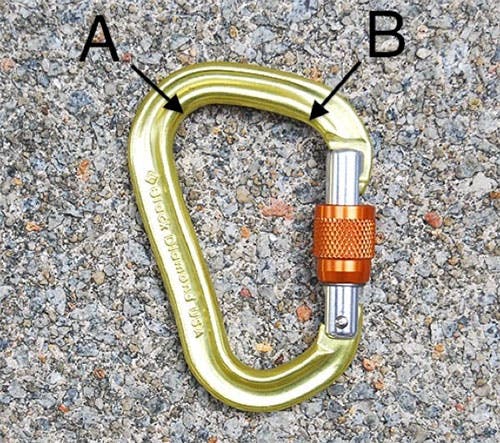
Kelly is classic, and he asked a bunch of stuff in there. We simplified it and did a quick test using just one style of BD carabiner (the VaporLock that Kelly was asking about) to try to put some general numbers to his questions.
Results:
In closed gate testing, utilizing the CE method (10mm pins), the VaporLock is rated at 21kN. Our typical batch test values are around 22kN. We tested one sample using slings (instead of 10mm pins) as a baseline and obtained a result of 21.8kN.
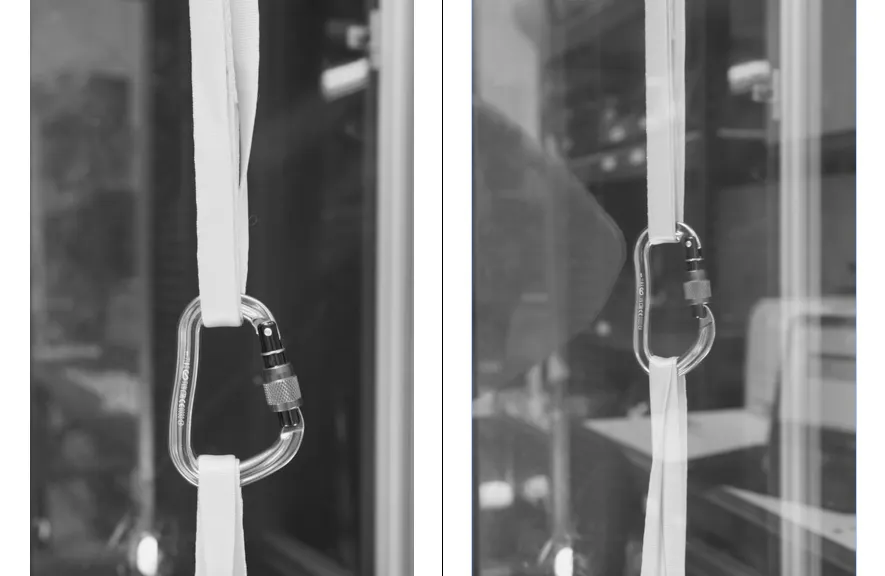
We then tested another sample, forcing the sling to the far side of the basket by putting a clamp around the carabiner. When tested in this configuration, the strength was 10.63kN. This configuration was quite the reduction in strength—about half.
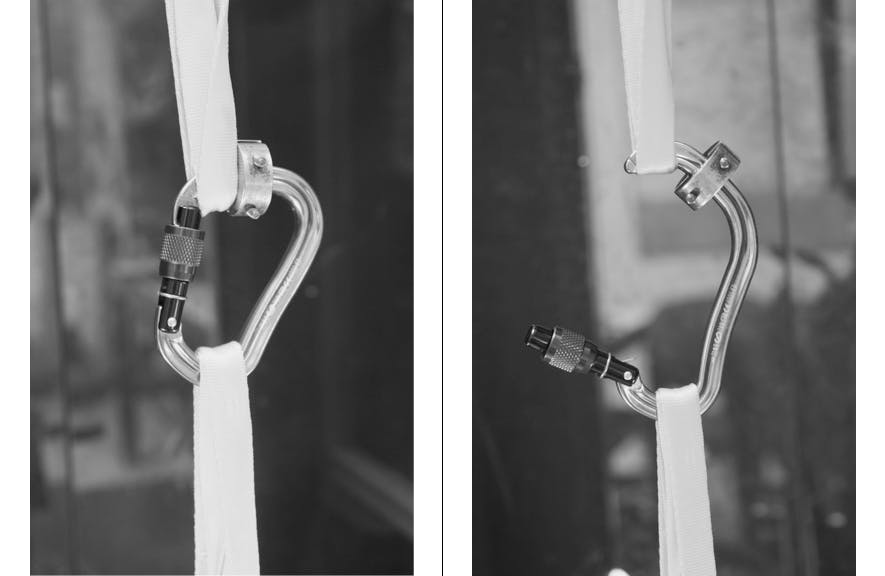
We then decided to test an absolute worst-case scenario; a sling that gets hung up on the nose.
Note: I have a previous post about this specifically
In this test, with one data point, the nose-hooked VaporLock failed at 5.21 KN. Yikes!
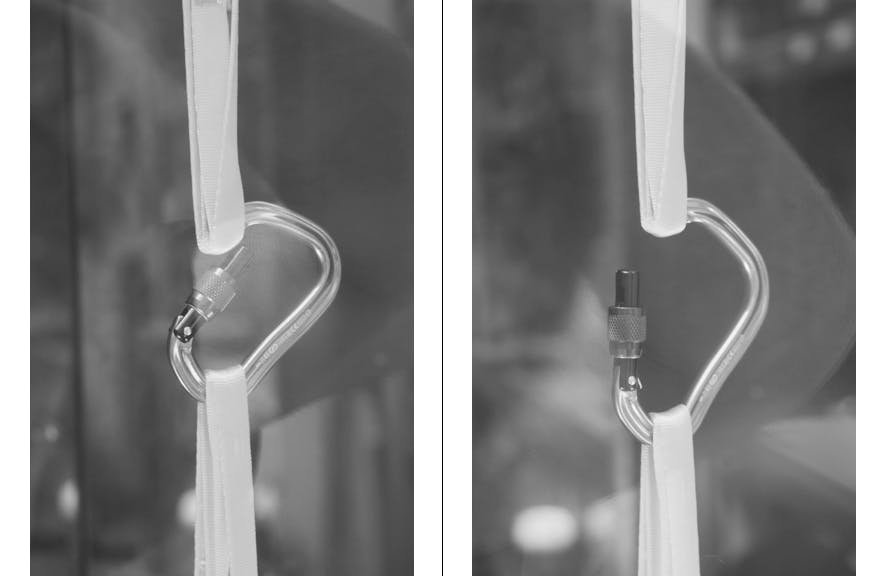
In Summary:
Please remember this is with just one data point for each testing scenario:

Now you must remember that this is just one type of carabiner and only one test in each configuration. (The gate was locked in our tests). I would be quite certain that depending on the geometry of the basket of the carabiner that an off-axis loading could result in a greater decrease in strength than we witnessed here.
Bottom Line:
Is the VaporLock weaker away from the spine? Yes—in this case about half as strong.
Could you whip on it? I wouldn’t recommend it.
Could Andre the Giant comfortably rest on the carabiner loaded out away from the spine? In a non-shock-loading scenario, yes.
Is the reduction in strength linear? We don’t know because we only tested two points, but basic physics states that the further you get from the in-line loading, the greater the reduction in strength.
What is the influence on shape of biner? We only tested one shape, but the shape of the biner will influence the results.
Are you compromising the strength of the master point by adding multiple points? Yes.
Is there much risk? There’s always risk.
So given our not overly scientific results here, remember, it’s always best to have the load lined up with the spine of the carabiner and the gate closed—that’s the carabiner’s strongest orientation.
Quad Axis and Tri-Axial Loading
Quad Axis Loading
So just after answering Kelly’s question, I received an email from a climber/instructor/guide who was sketched out after witnessing this out in the field:
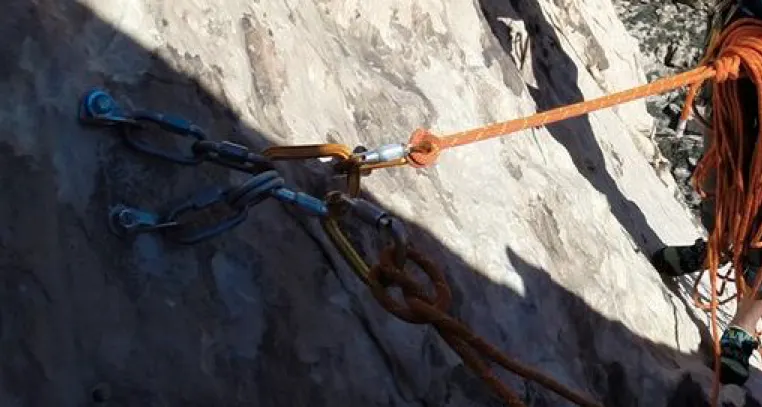
His question was, “How much can tri-axial loading weaken a carabiner?”
Most have heard of tri-axial loading, but this is actually quad-axis loading. The loading on the carabiner is in FOUR directions: the two quicklinks at the anchor, then the two climbers clove-hitched into the carabiner. The ultimate question is, does it matter?
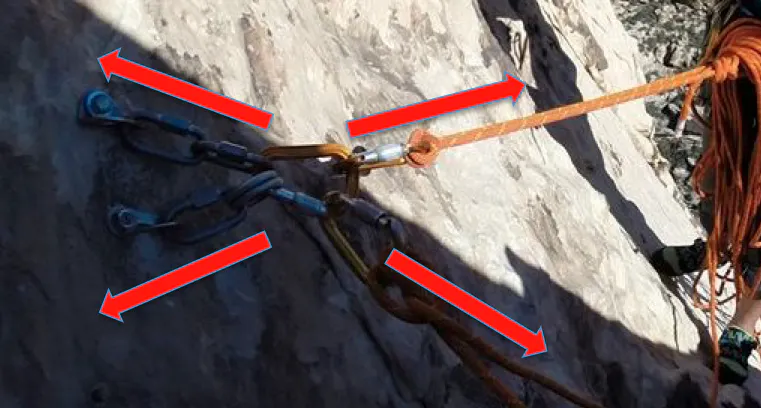
The photo above, in a non-shock-loading scenario is likely fine, because the loads are low. But what happens in a situation where the load is increased? Does the quad-axis loading affect the ultimate strength of the anchor carabiner? We did a few quick tests to check it out.
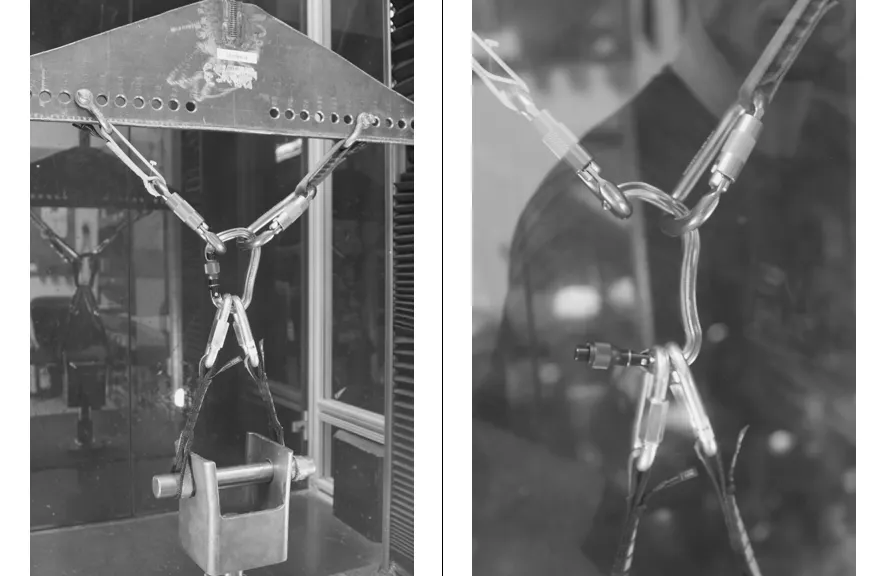
Results:

As one would guess, yes, multiple axis loading of a carabiner does reduce its ultimate strength. Given our three data points, the reduction in strength is approximately 25%.
Tri-axial Loading
And then of course we wanted to check out if there was a noticeable difference in values when tested in the slightly more common tri-axial loading scenario. We tested this in two configurations: two loads on the large end of carabiner (left), and two loads on smaller end of carabiner (right).
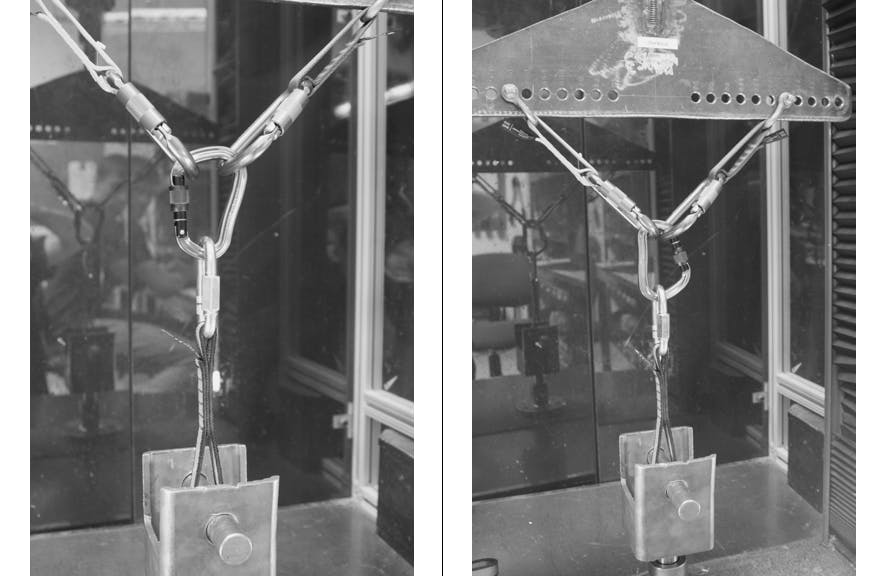

Bottom Line:
In general, climbing gear is pretty robust, but that statement holds more true when the gear is used as designed and in typical loading scenarios. Once you start to stray off from ideal use (ie. off-axis loading, tri-axial loading, quad-axis loading), then you can see the ultimate strength reduced, even to the point, as in a nose-hooked scenario, where things become super sketchy.
So the bottom line is that you need to keep carabiners lined up along the major axis and try not to allow for multi-directional loading of carabiners, because it compromises their strength.
Be safe out there…the last thing you want is to be plunging towards the eternal lake of fire.
Climb Safe,
KP


